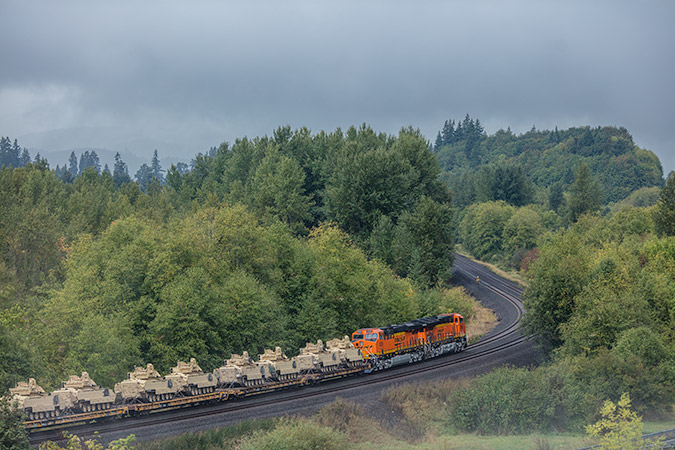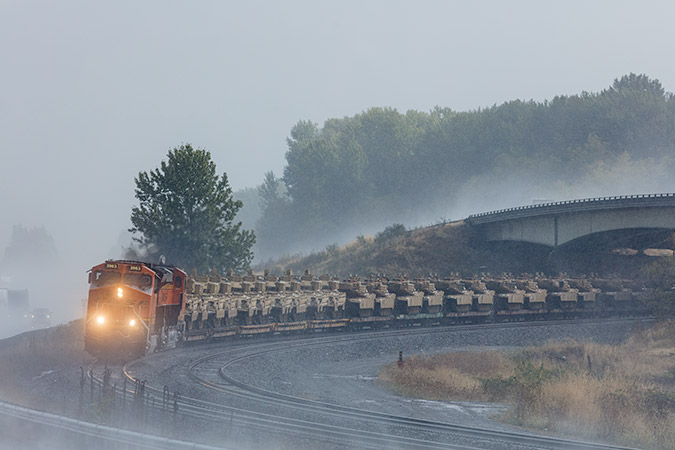
Trains, tanks and troops: How BNSF has long supported the U.S. military
BNSF and its predecessor railroads have a long history of partnering with the U.S. Armed Forces on important military operations. During the Civil War (1861-1865), railroads helped transport troops and supplies for deployment; today, we frequently move the equipment needed to support our nation’s defense.
In fact, the Civil War – often called the “first railroad war” – was the first instance in which railroads became the vital new technology for both Union and Confederate forces. They moved unprecedented numbers of troops and supplies.
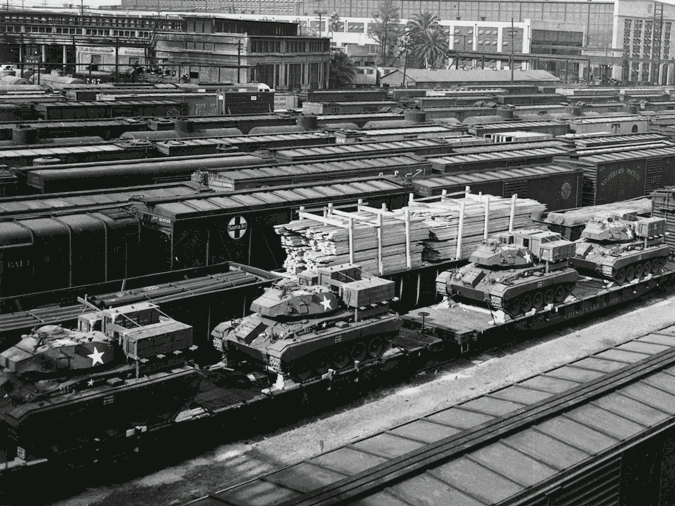
“Today, BNSF continues to serve a pivotal role in moving brigades to training centers across our network,” said Theresa Lorinser, director, Marketing. “Our team works directly with the Army on a daily basis to ensure the planning stage of a particular move is coordinated down to every detail.”
That coordination is critical to the Department of Defense’s Railroads for National Defense Program, which ensures the nation’s rail network is ready when called upon for defense deployment and peacetime needs. Working with the Federal Railroad Administration and freight railroads, this program established the Strategic Rail Corridor Network (STRACNET), spanning 33,000 route miles and serving over 120 defense installations. STRACNET is the continuous, interconnected vascular system of our nation that allows the U.S. military’s flow of defensible units from base to seaports of embarkation.
“The military no longer uses rail to move troops, but we do move tanks and other equipment,” said Lorinser. “We typically use state-of-the-art, chain tie-down flatcars that can adjust to carry large vehicles or we can load equipment into 20- to 40-foot containers.”
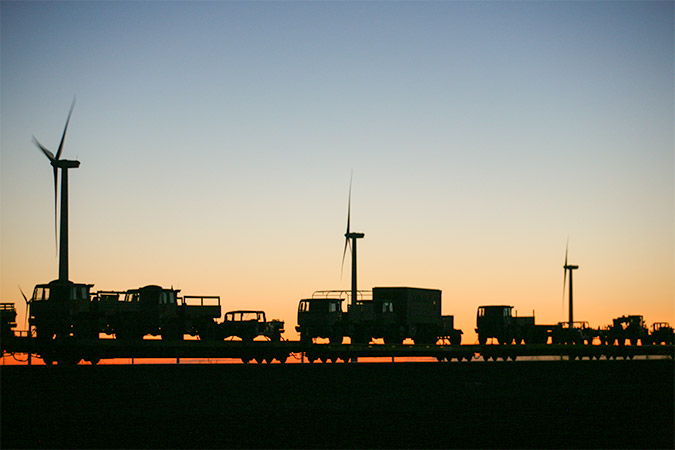
Each brigade movement is different, bringing its own set of unique challenges and equipment needs. In 2016, BNSF executed a 2,000-mile large-scale move of equipment for a training exercise for the soldiers of the 1st Armored Brigade Combat Team, 34th Infantry Division. The operation included loading hundreds of vehicles, tanks and other systems onto 400 railcars.
Due to the loading site’s limited track capacity, BNSF teams had to be creative to load such a large amount of equipment within the allotted timeframe. The operation called for eight trains to complete the movement. BNSF personnel built each train offsite. A train would arrive early every morning for loading. Members of both teams worked together to load the vehicles by noon, with the tie down and inspection work completed through the afternoon. Each evening, a train would depart and the cycle would start over the next morning.
After this successful partnership, many National Guards across the U.S. began inquiring about ways they could work with BNSF to do more by rail. In the past three years, BNSF has worked with the National Guards of 10 different states and is currently exploring projects for training, drills, deployment from fort to port and vice versa.
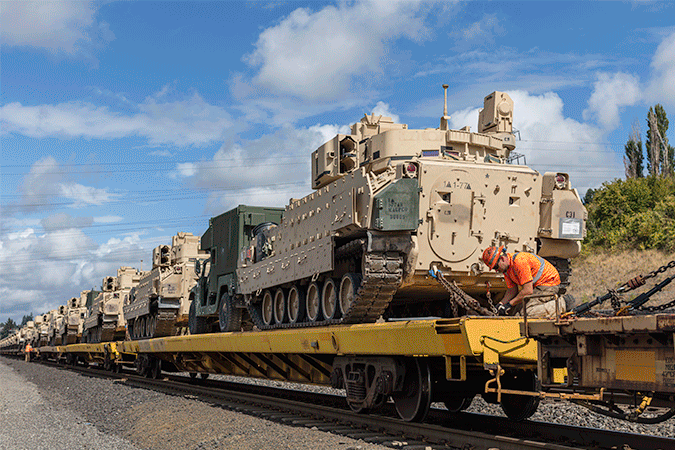
"Our warfighting capability relies upon rail,” said Col. Lillard D. Evans, deputy commander, Military Surface Deployment and Distribution Command. “The positive relationships we maintain with our commercial rail partners is key to our success in moving, deploying and sustaining the armed forces to deliver readiness at speed."
BNSF is proud to be a transportation service provider for the military and is a member of the National Defense Transportation Association (NDTA), an alliance of government, military, and private sector organizations working together to meet the challenges of military logistics and transportation. The NDTA has awarded BNSF its Distinguished Service Award four years in a row for outstanding accomplishments in transportation, logistics, or passenger travel.
We are also proud of the many military veterans who have joined BNSF. “The men and women of the armed forces, with their specialized skills and training, disciplined background and safety-first mentality, seamlessly acclimate into BNSF positions and our culture,” said Kim Cummings, BNSF’s assistant vice president, Human Resources and Diversity. Currently about one in five of BNSF’s employees is a vet.
Whether we are helping to support the U.S. military, an important customer to BNSF, or continuing the tradition of hiring vets, BNSF and the armed forces continue our history of playing a central role in our nation’s development and security.
